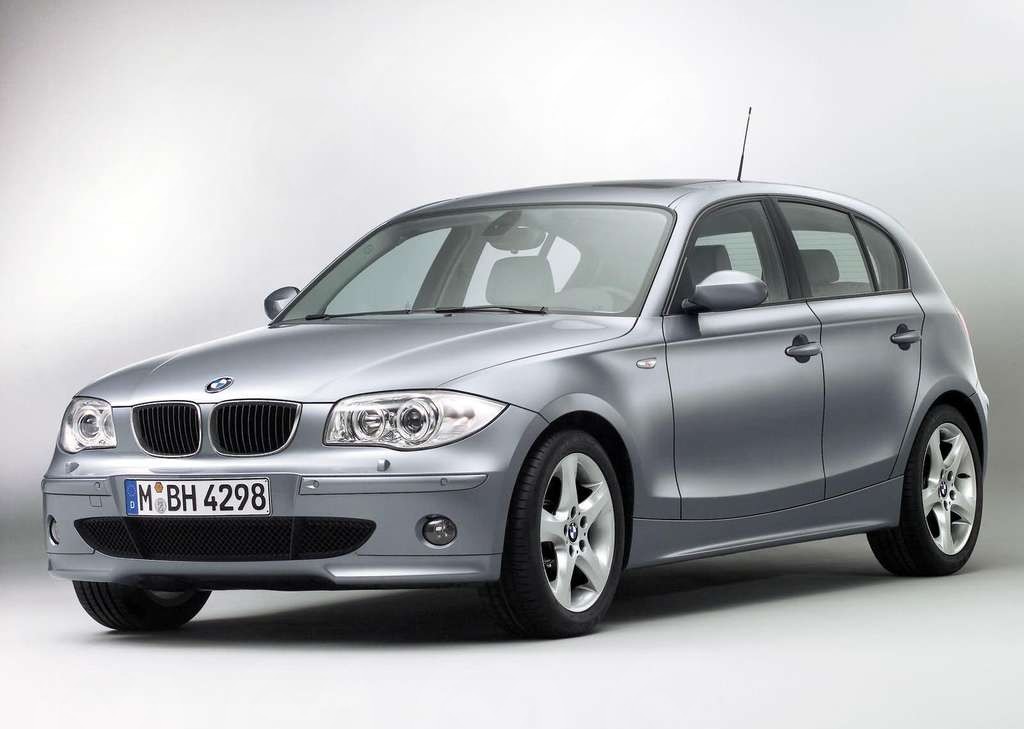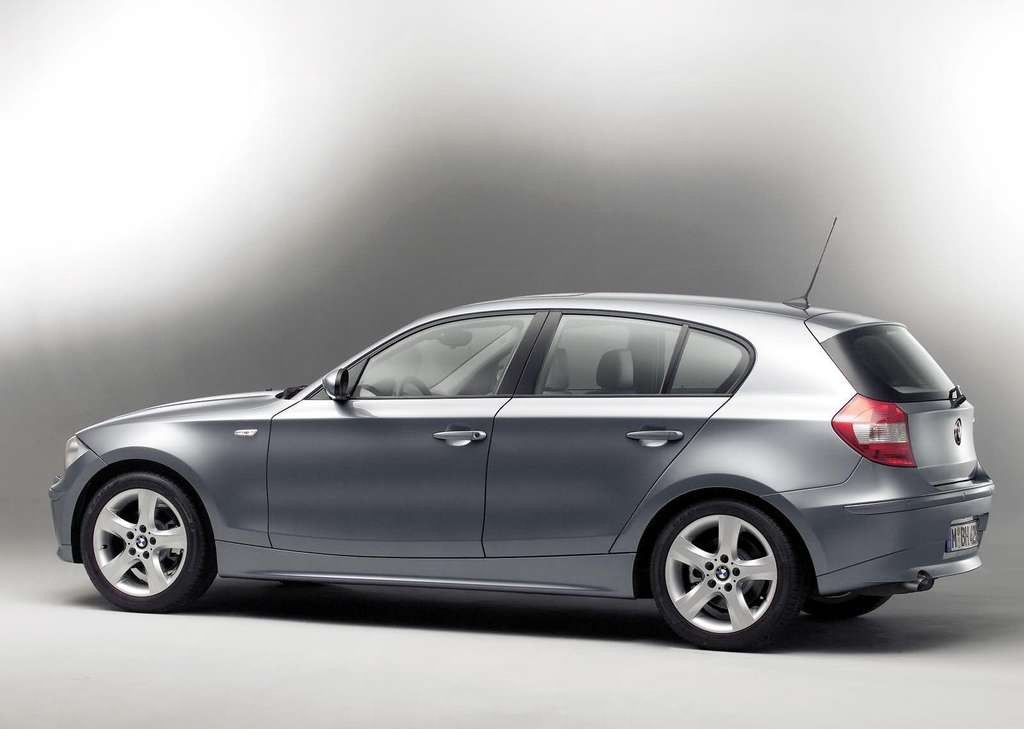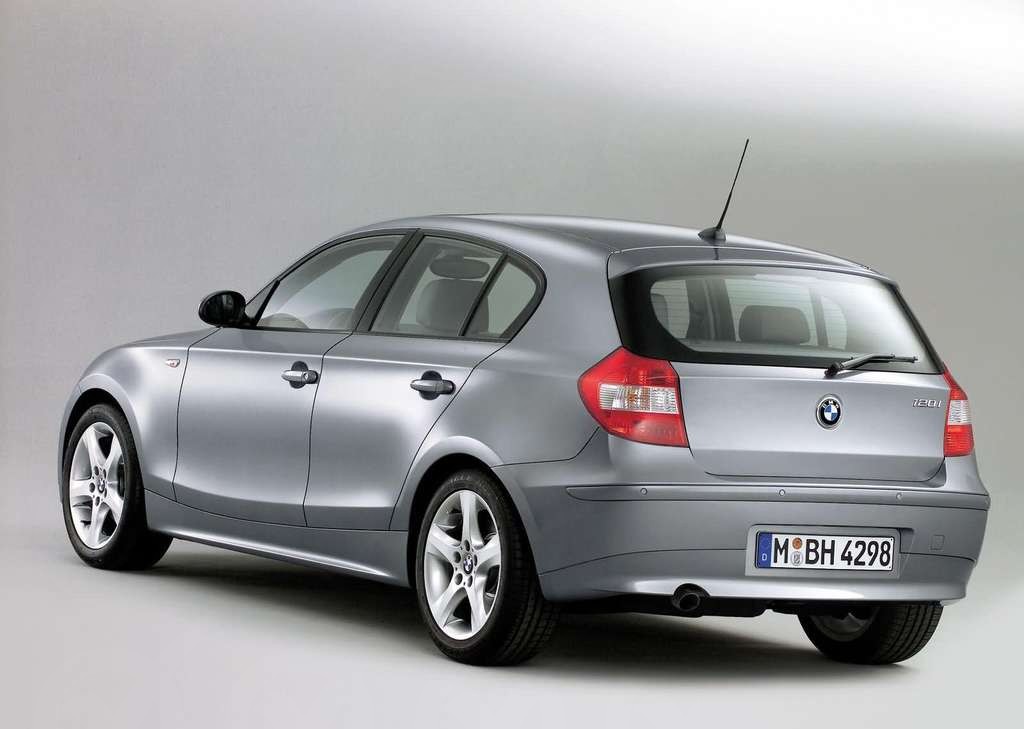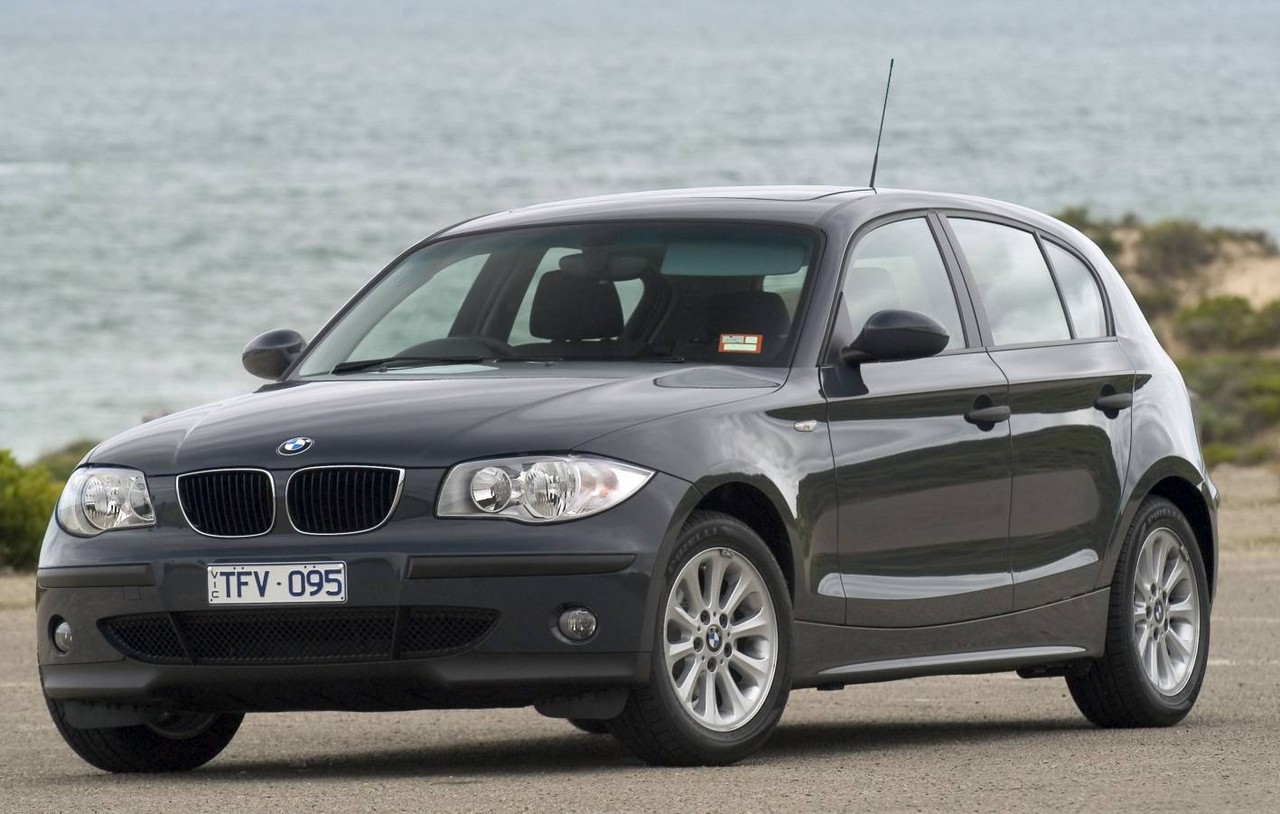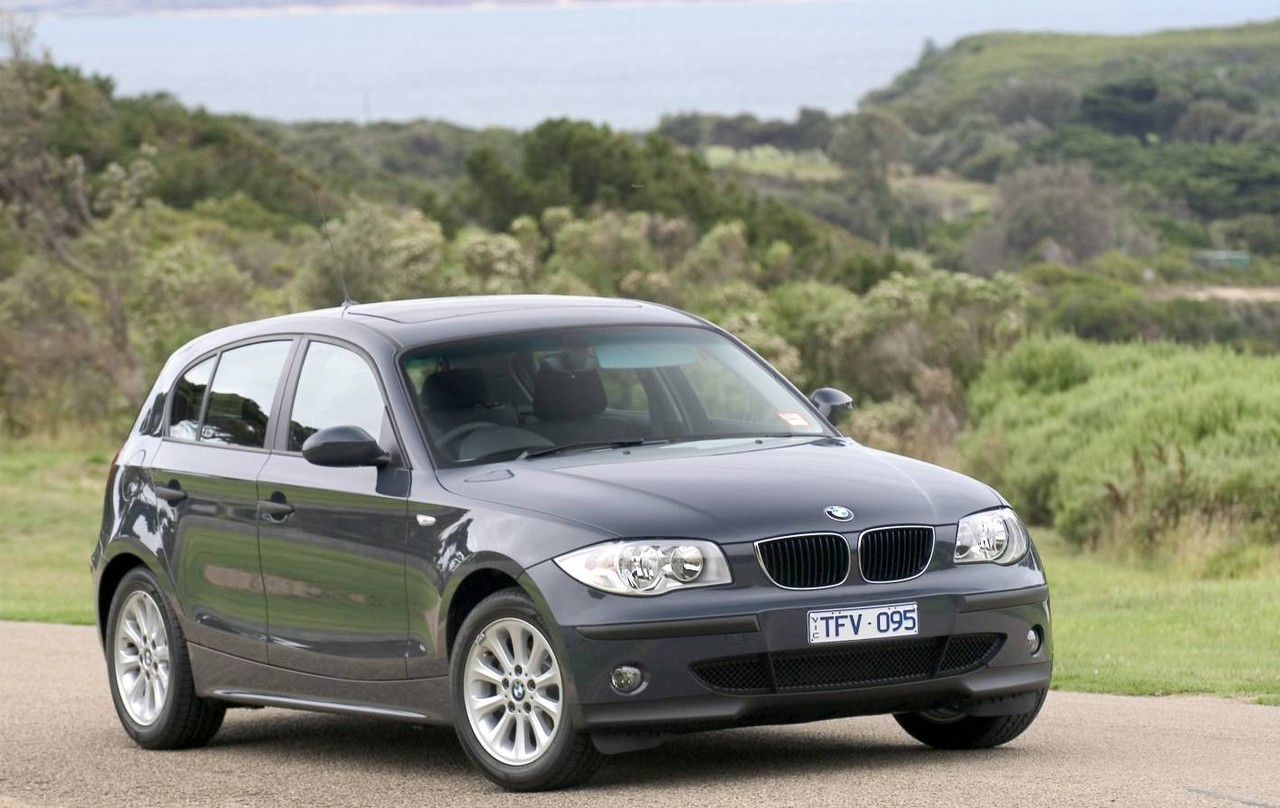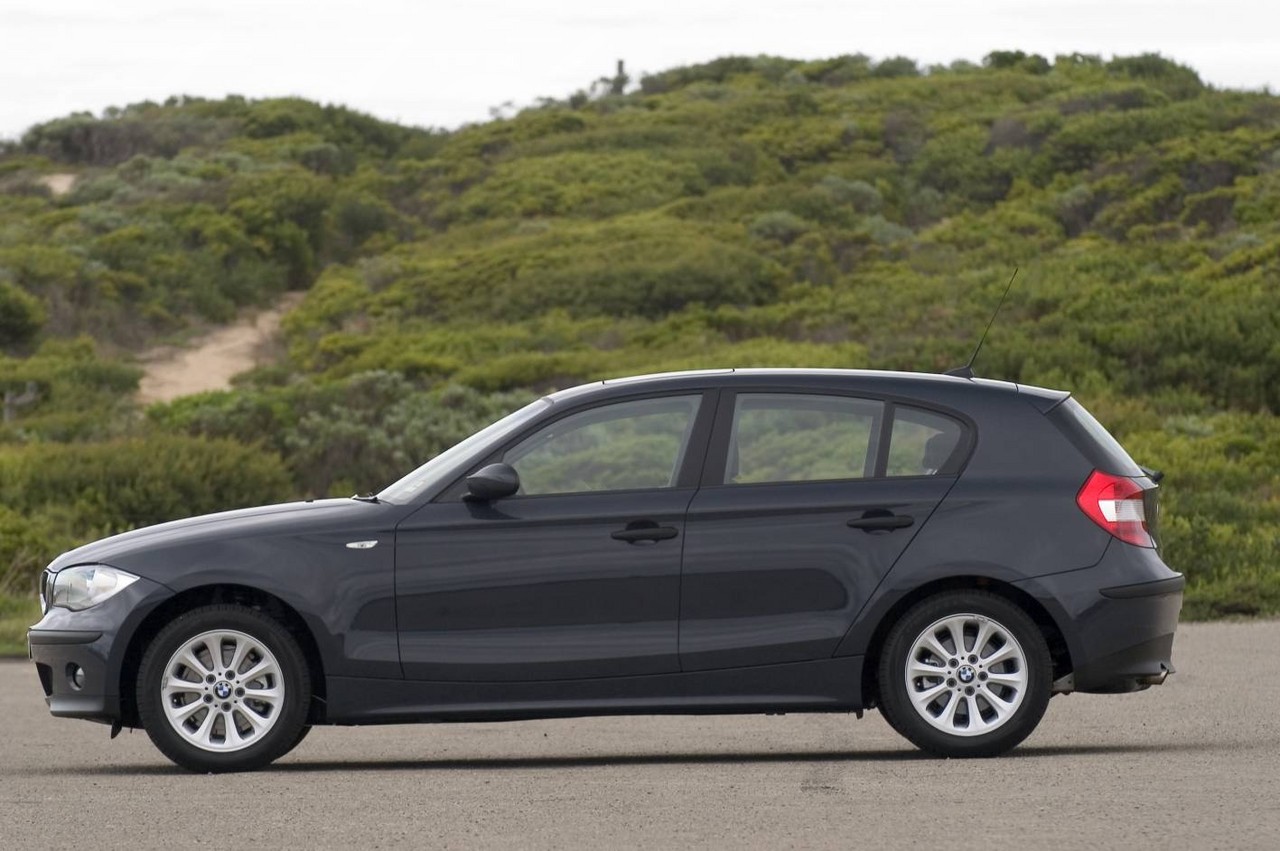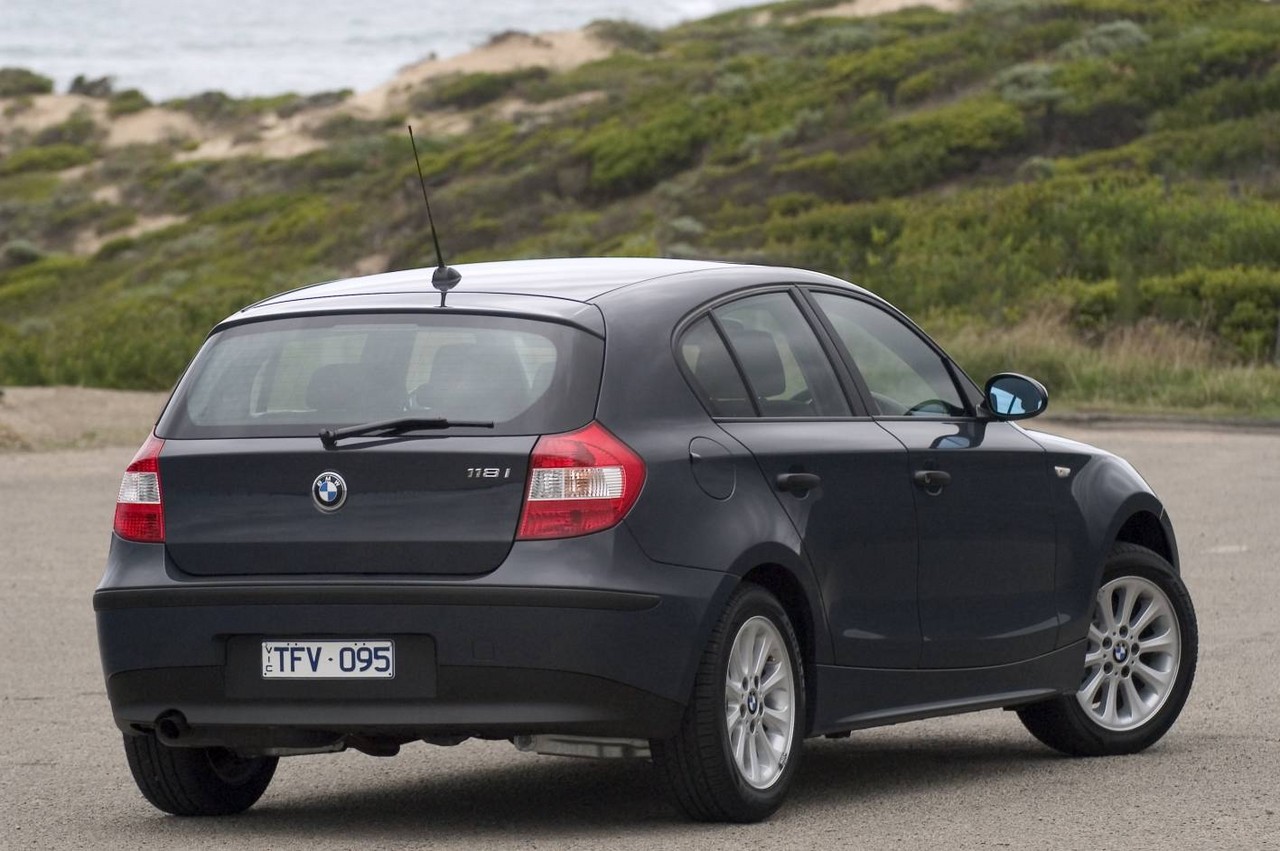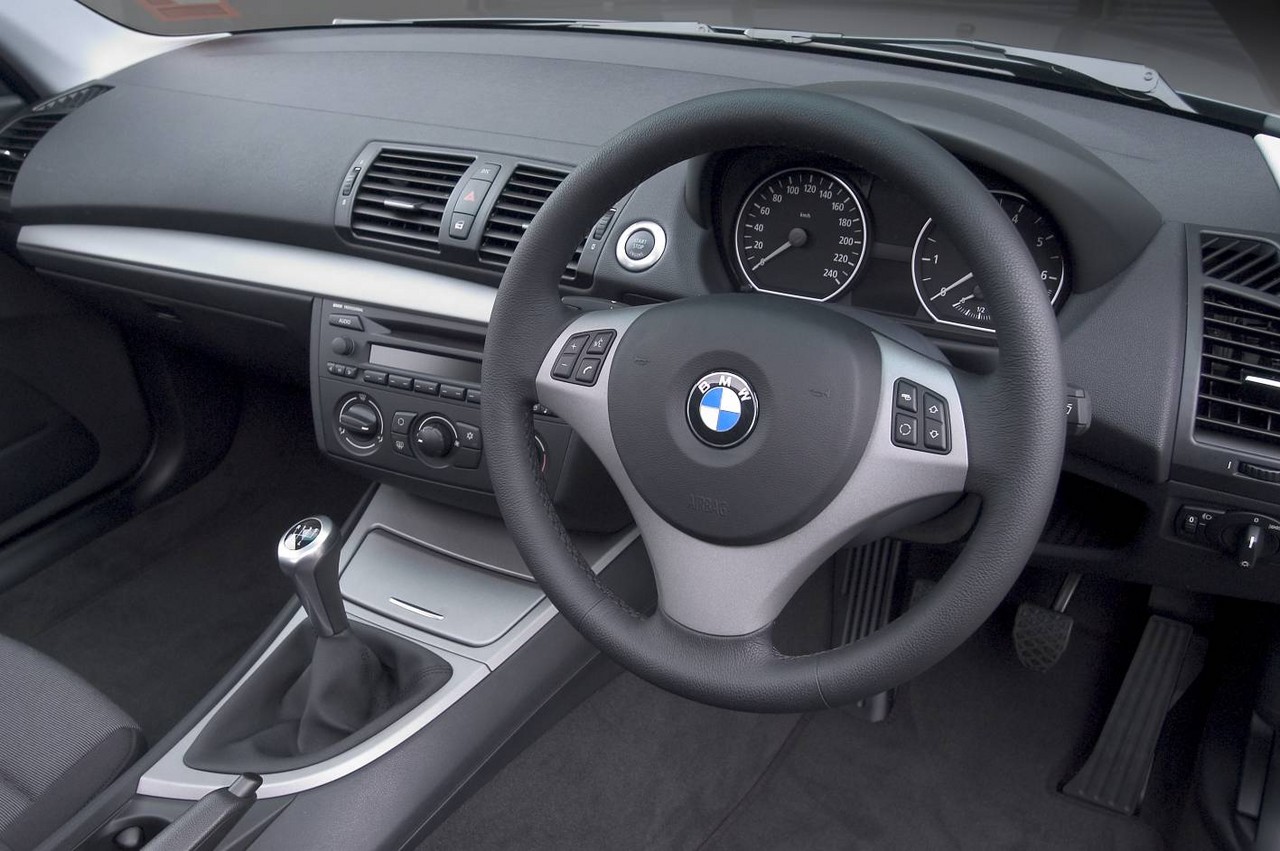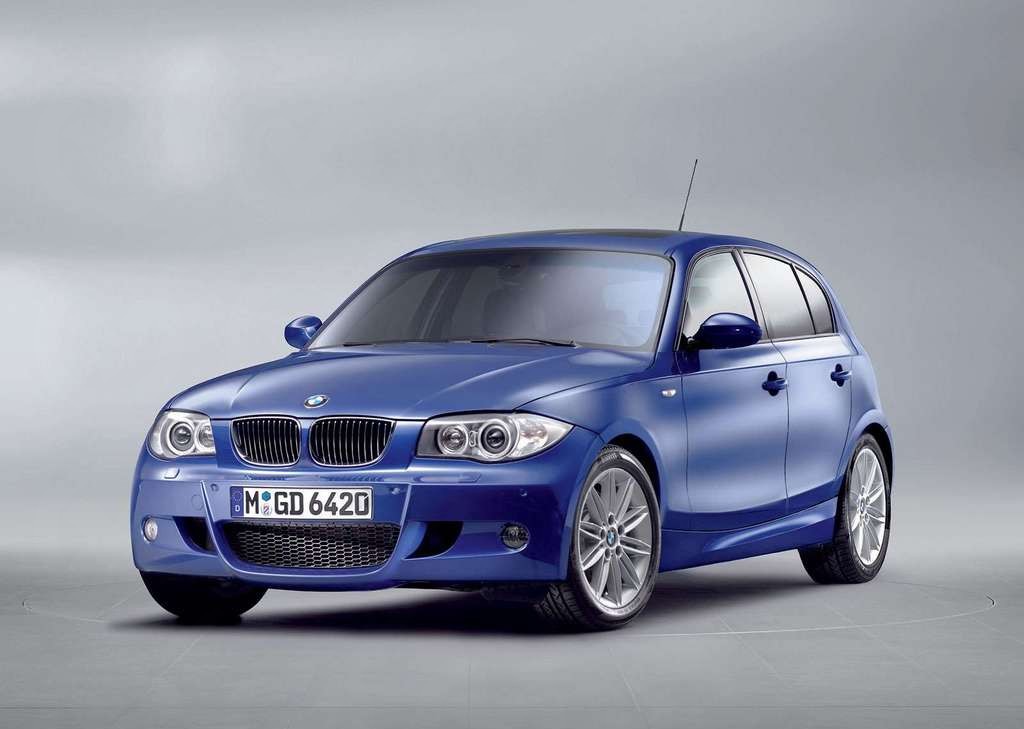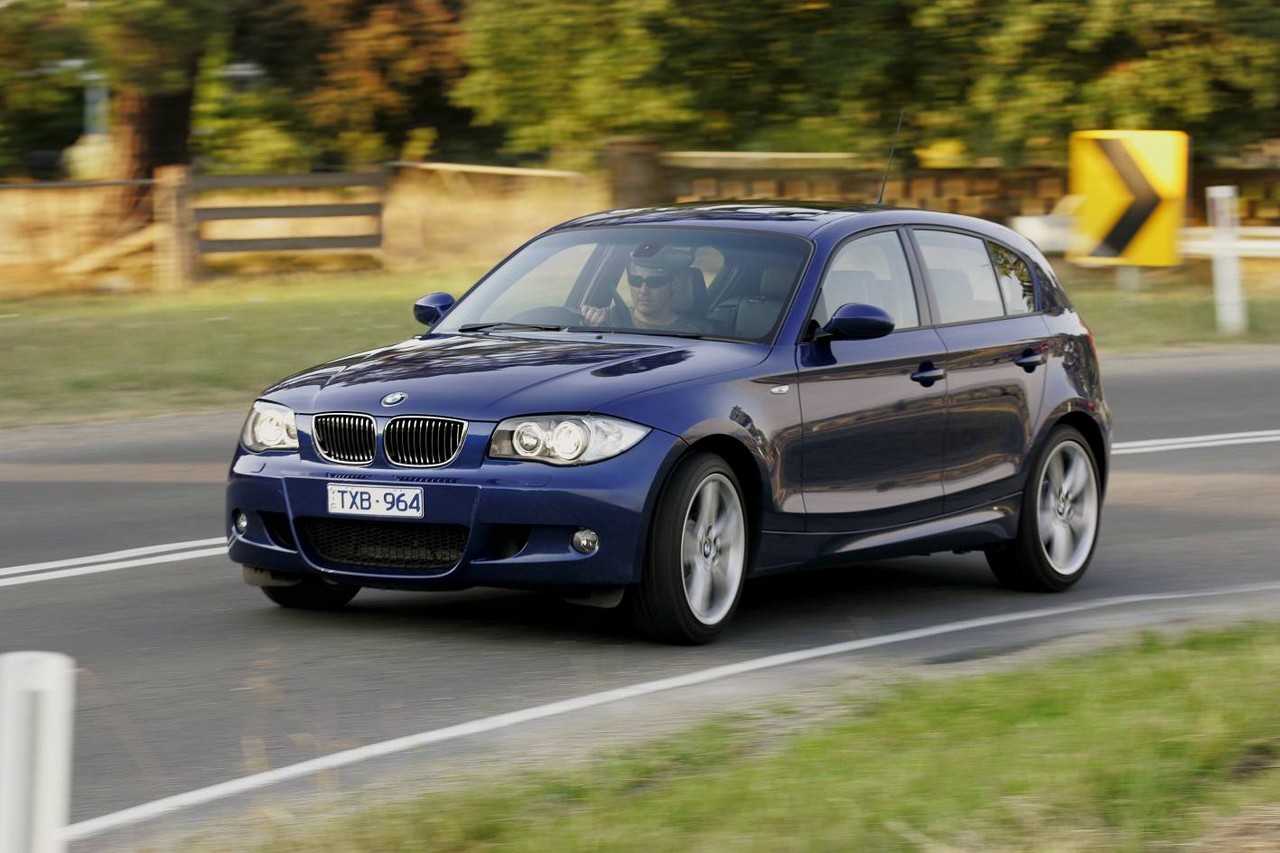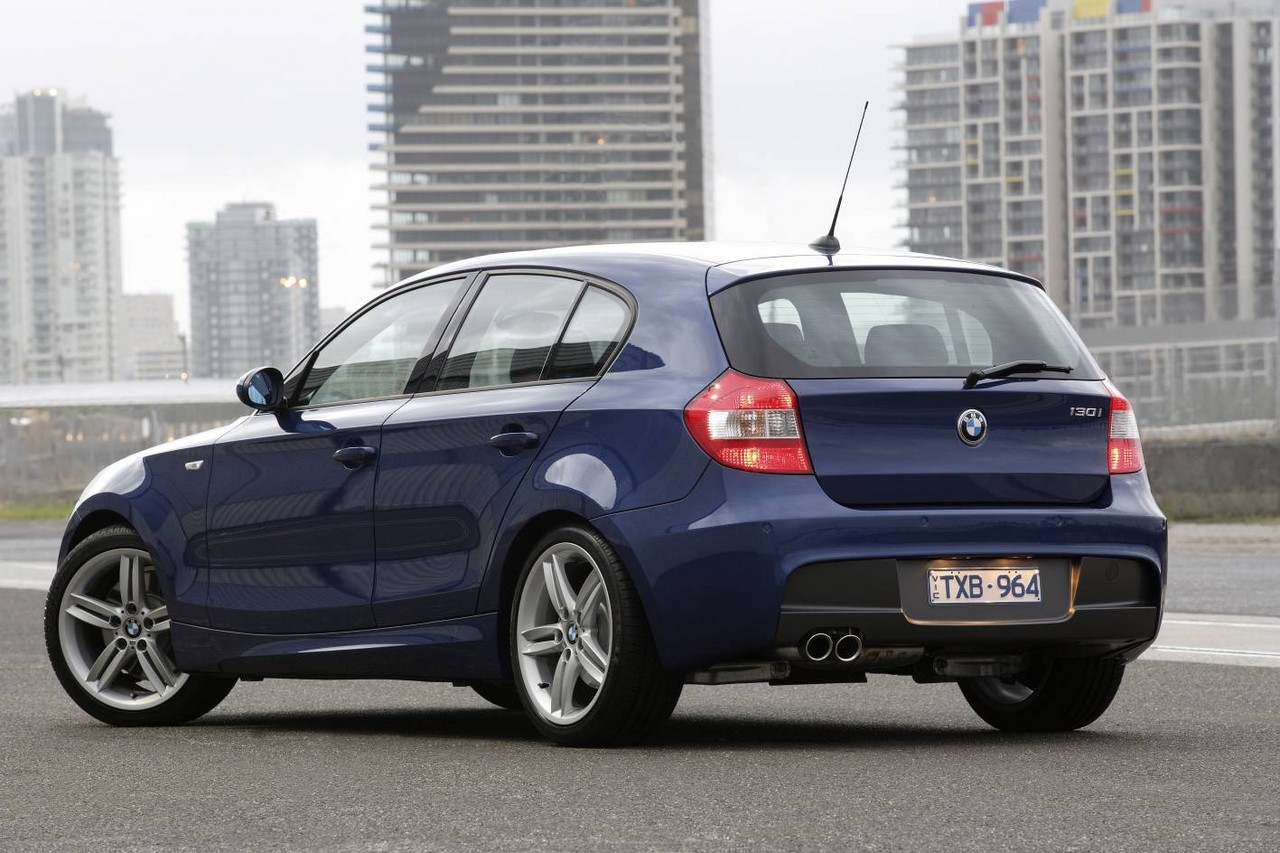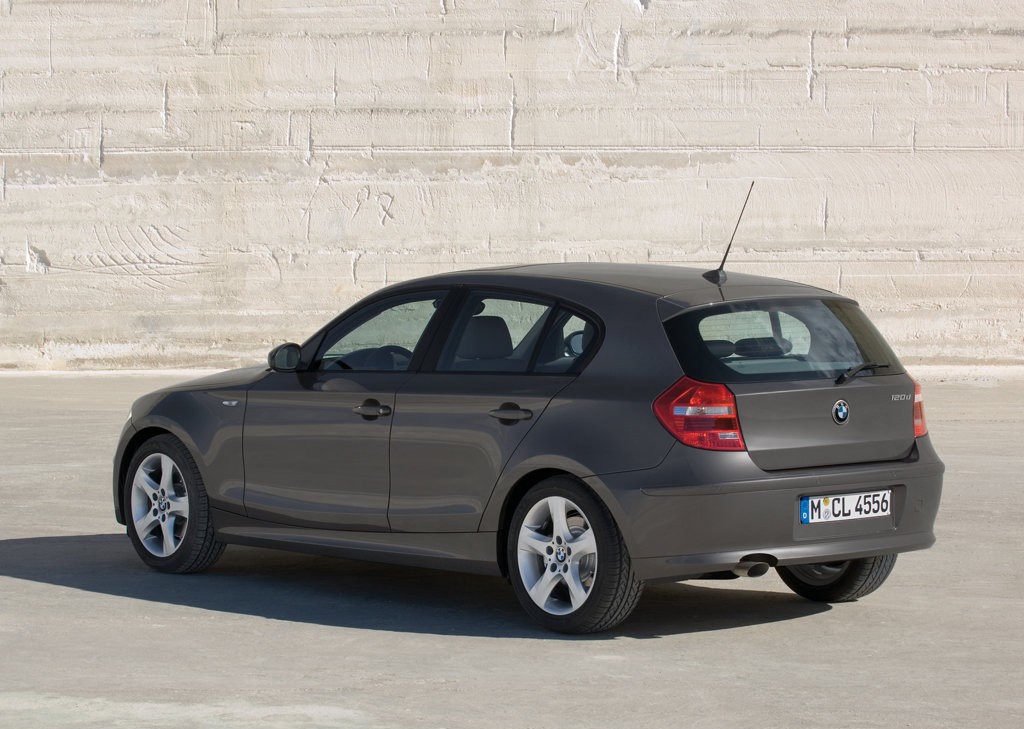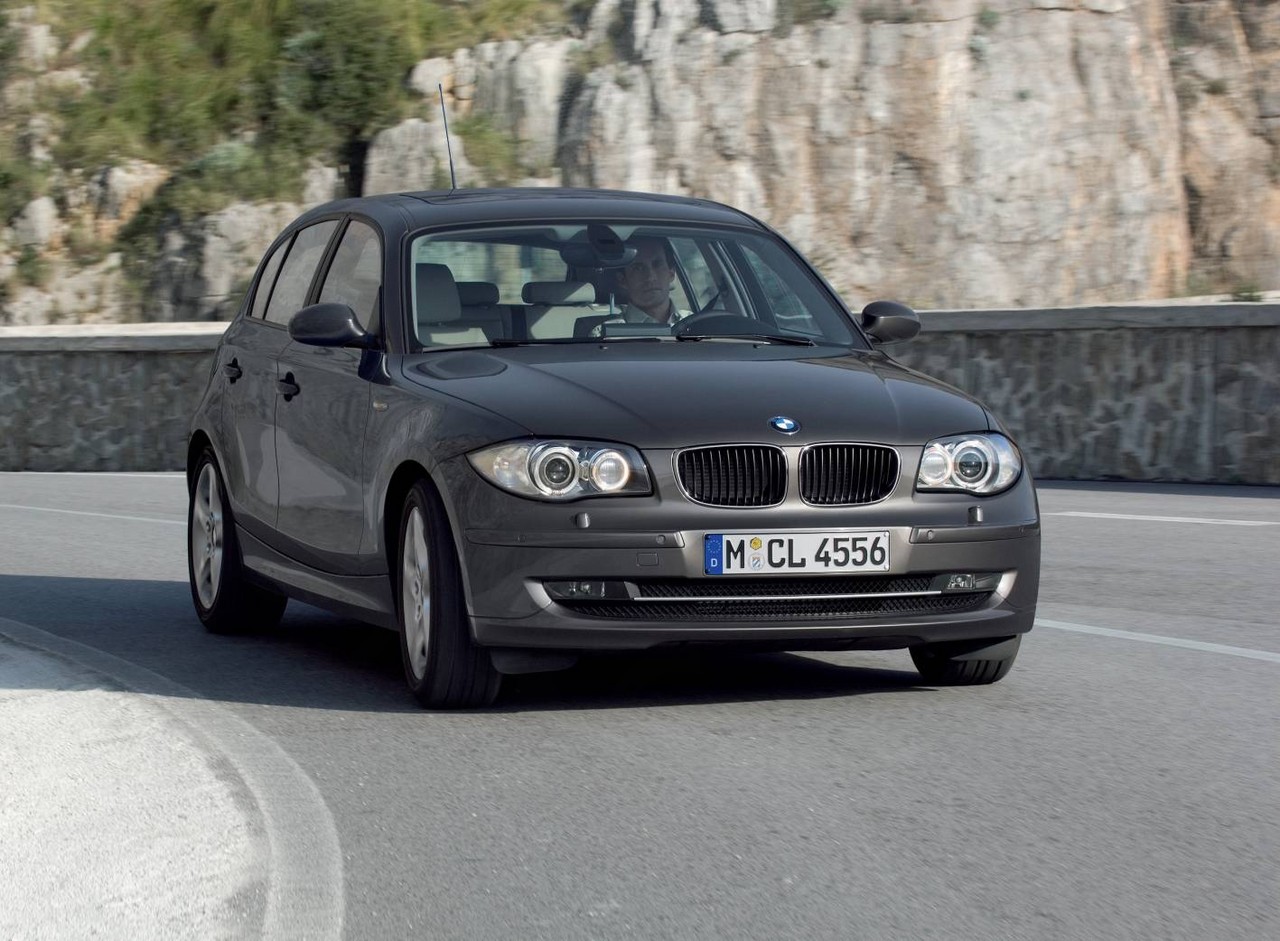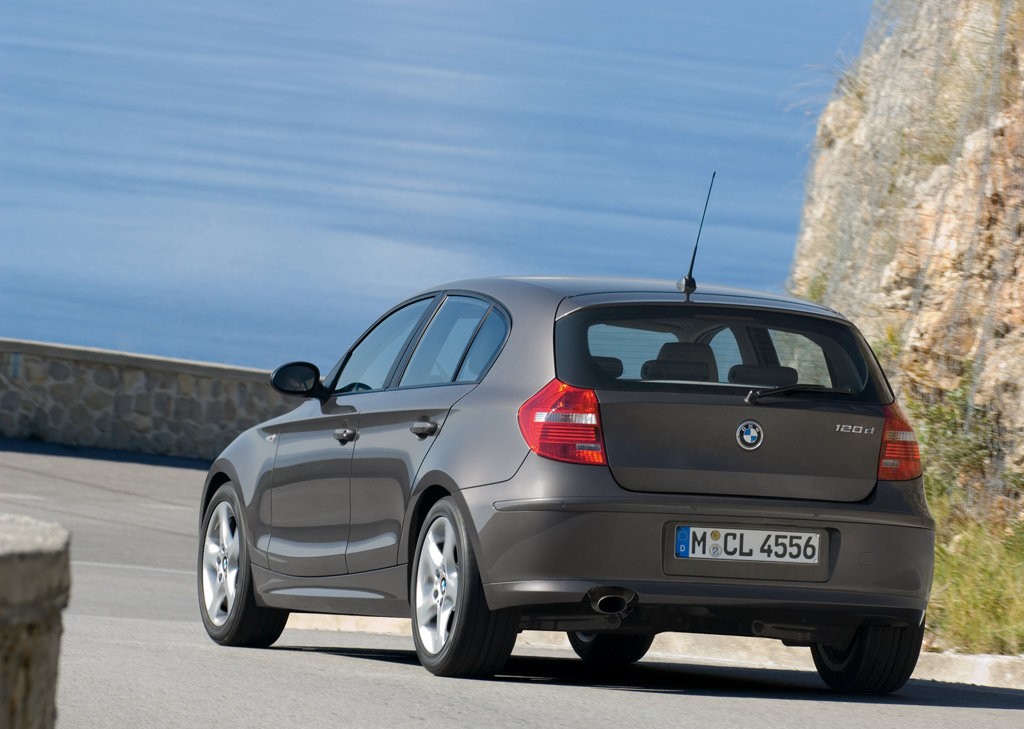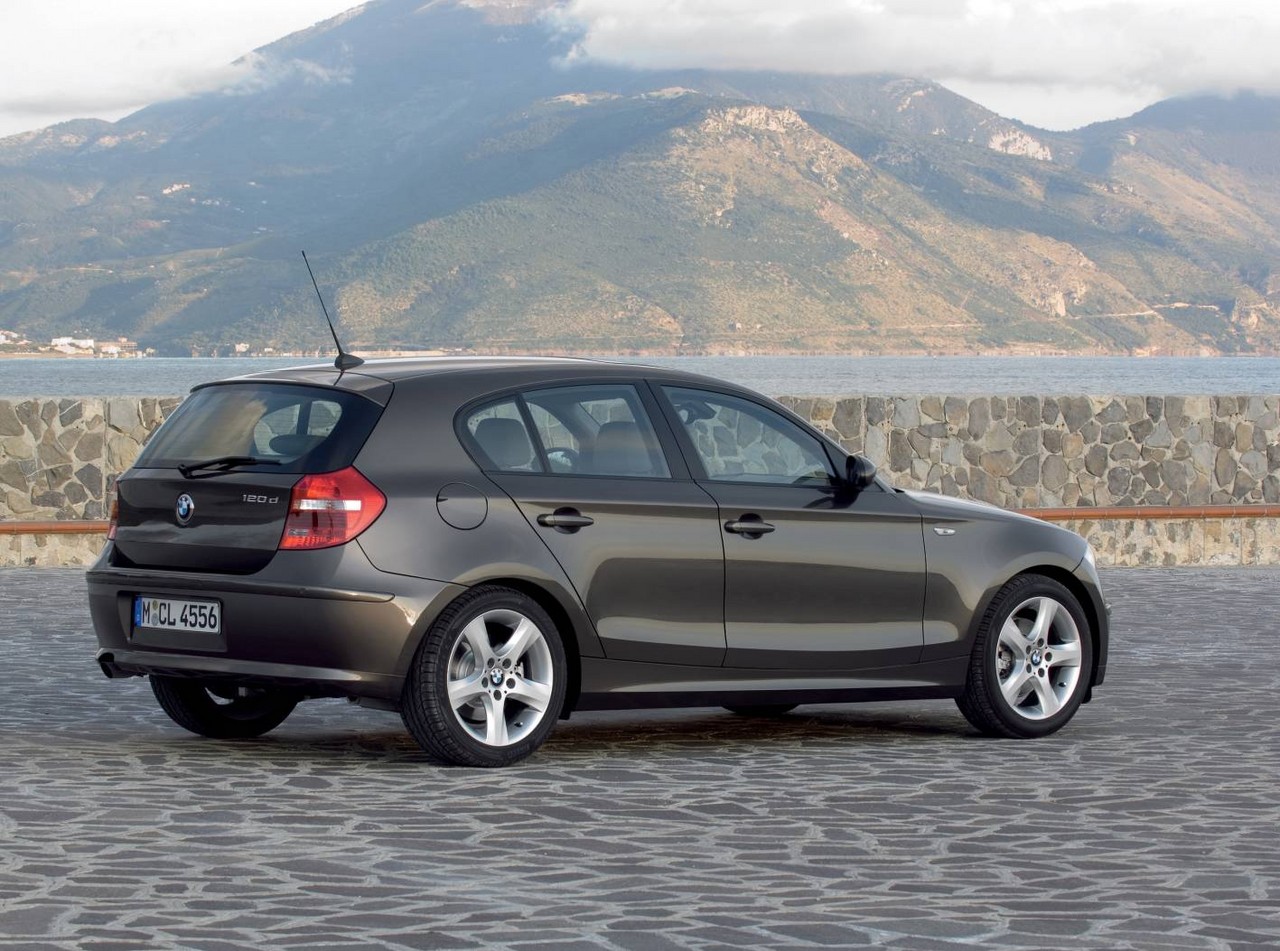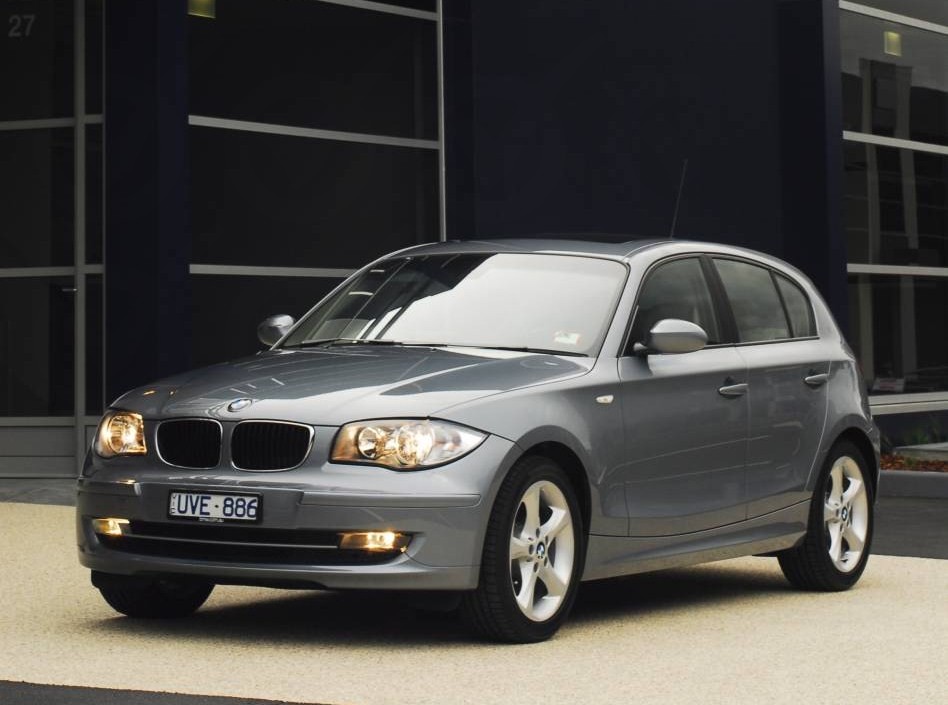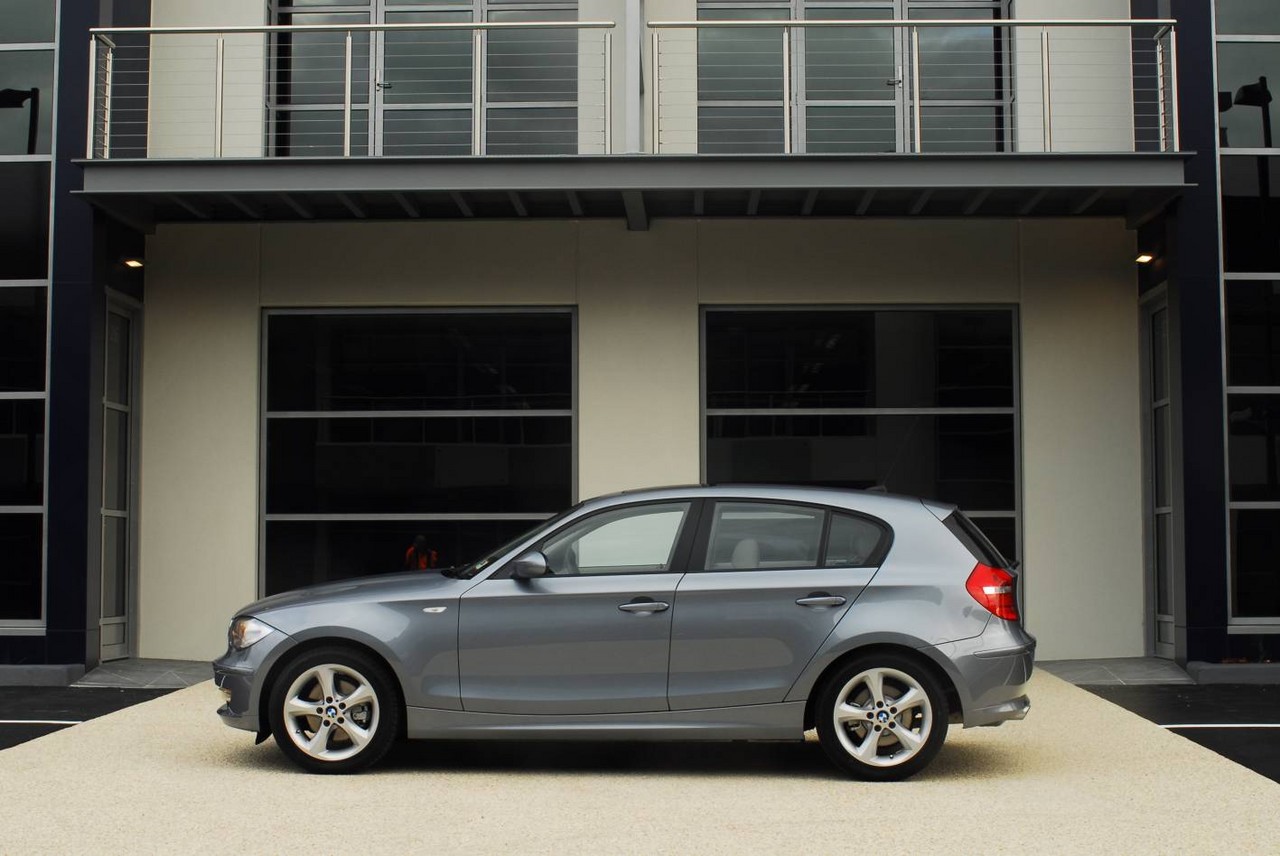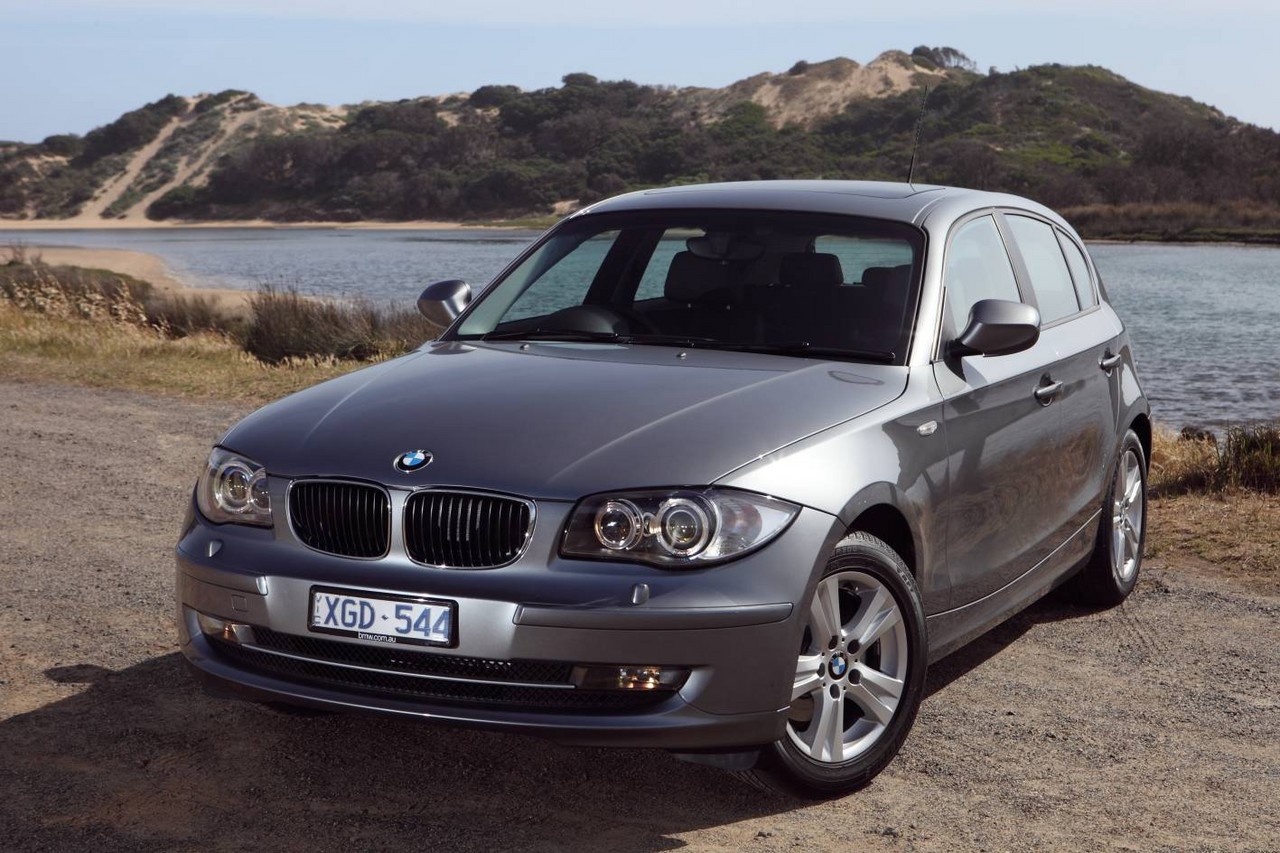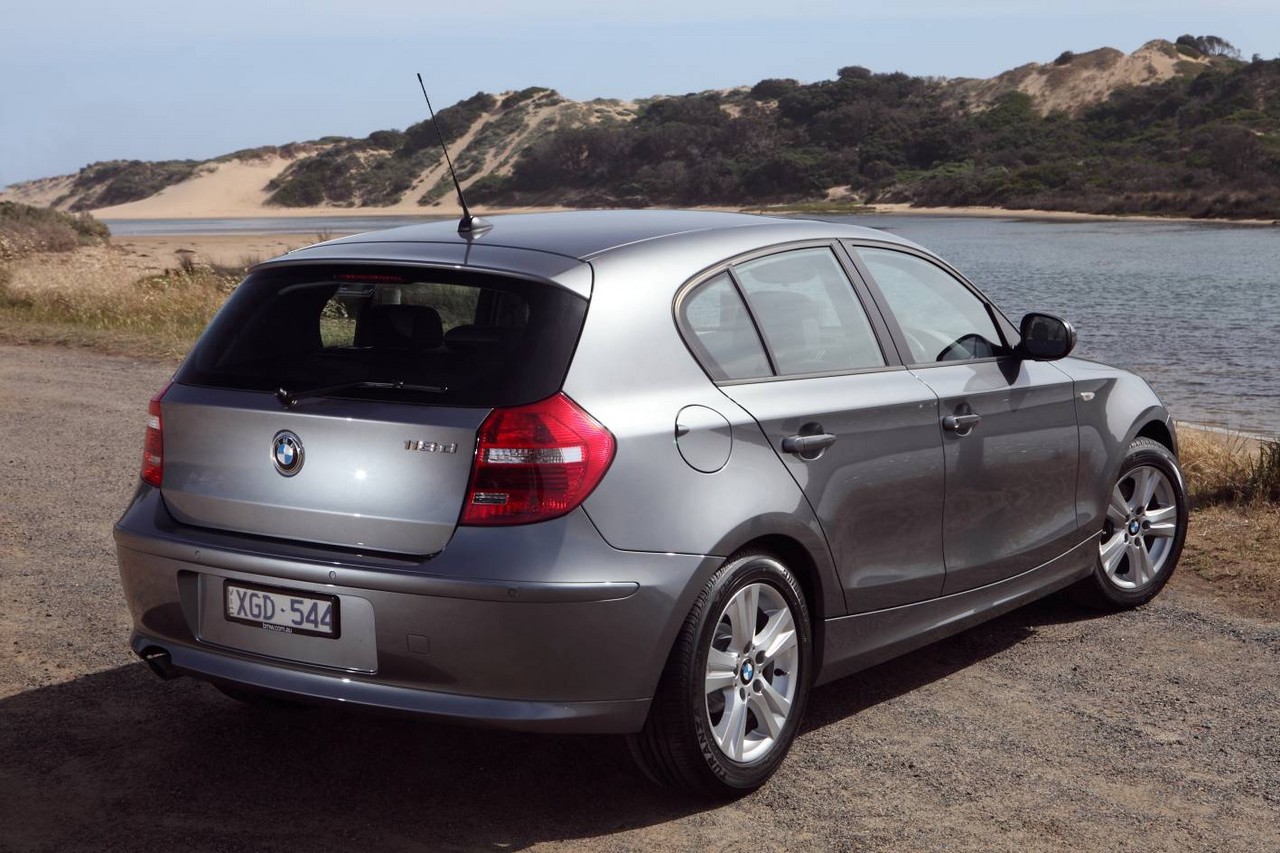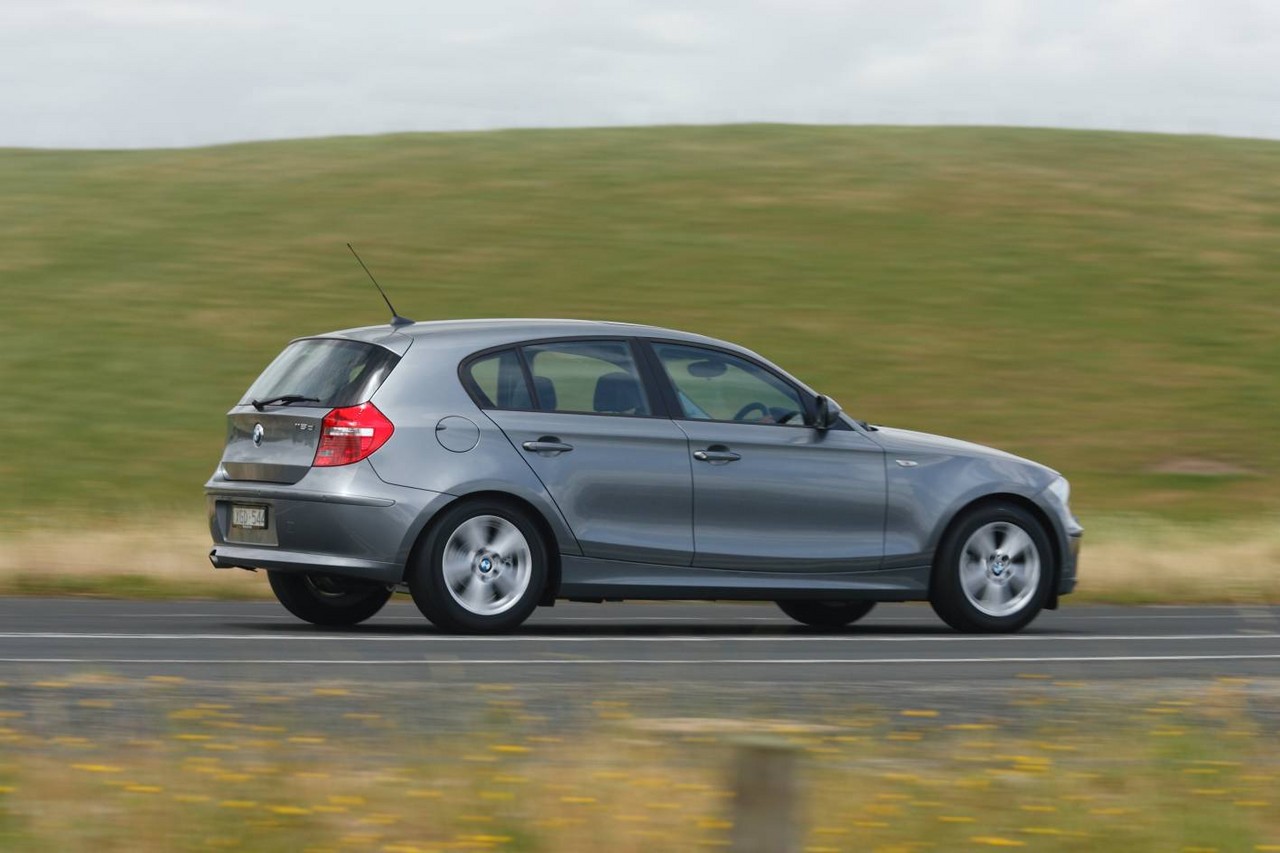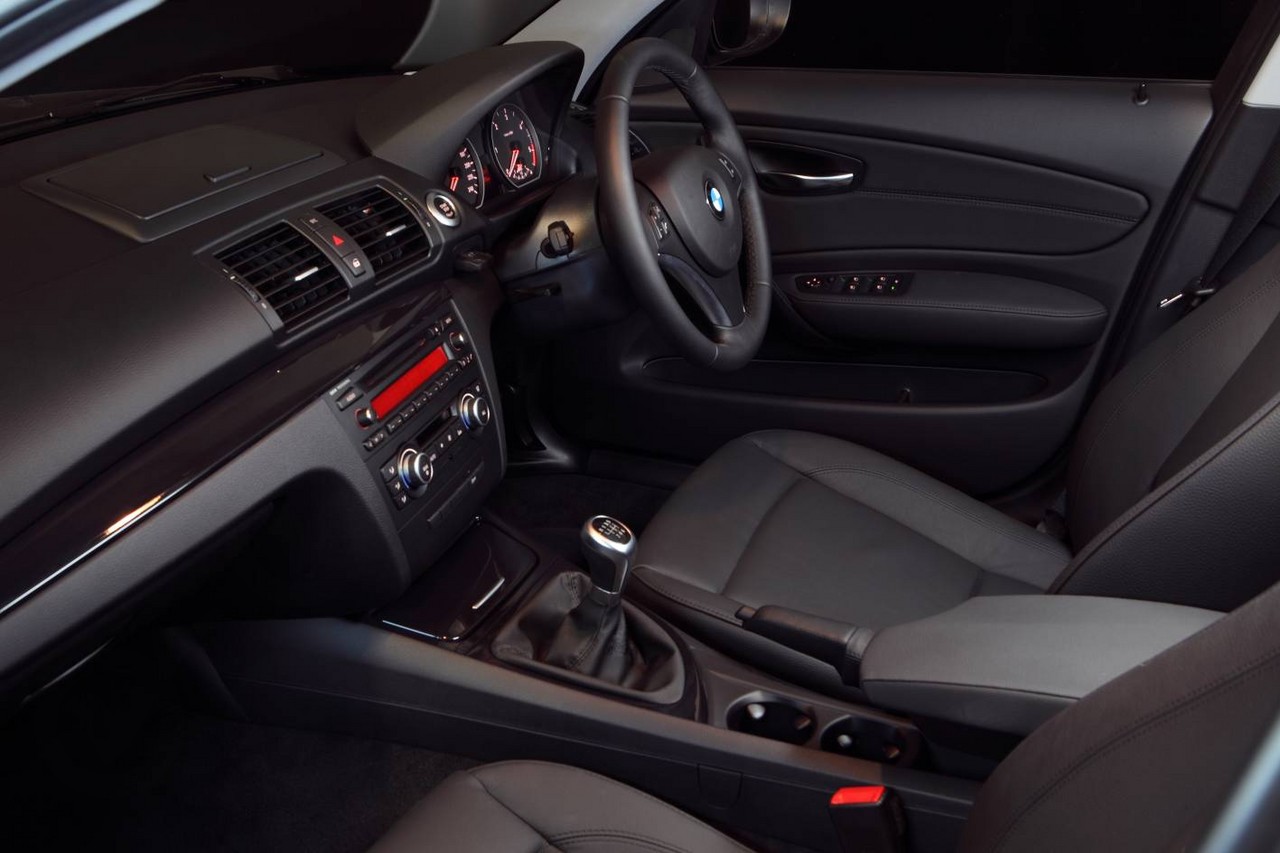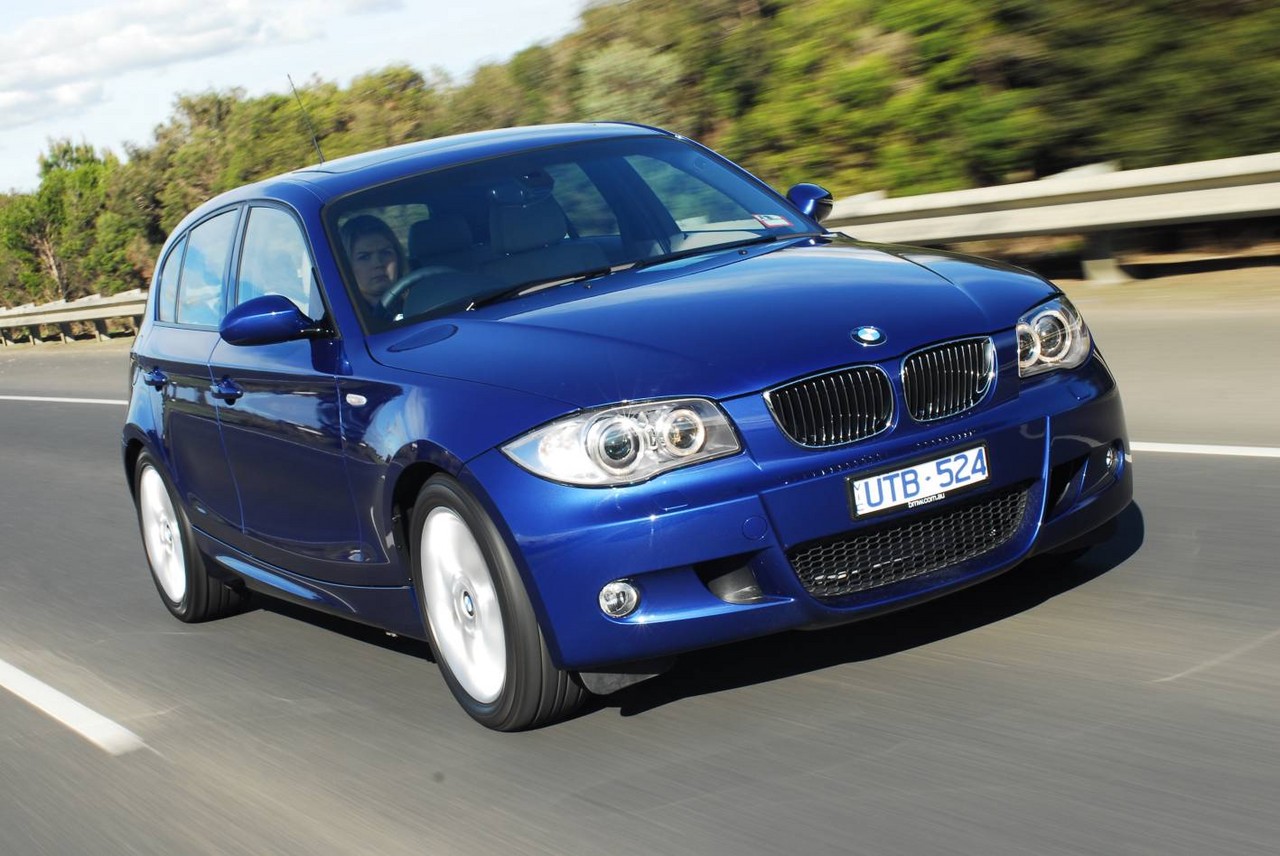
- Fuel-efficient powertrains
- Impressive ride/handling balance
- Enjoyable rear-wheel drive dynamics
- Direct, accurate steering provides feedback
- Cramped rear seat
- Standard suspension struggles with sharp bumps at low speeds
- 1.6-litre engine for 116i only adequate
- N47 turbo-diesel engines susceptible to broken timing chains
Review: BMW E87.I 1-Series hatch (2004-07)
Overview
Released in October 2004, the BMW E87 Mk.I (E87.I) 1-Series was a small, five-door hatchback. Manufactured in Germany, the rear-wheel drive E87 1-Series range initially consisted of the 118i and 120i models, with the 116i following in March 2005 and the 130i Sport in September (see table below). In May 2006, the range was further expanded with the 120d, while a six-speed manual transmission replaced the five-speed units fitted to the 116i and 118i.
The E87 1-Series was developed from the E90 3-Series with which it shared 60 per cent of its components. Compared to the E90 3 Series sedan, however, the E87 1-Series hatch was 293 mm shorter (at 4227 mm), 66 mm narrower (1751 mm), 9 mm taller (1430 mm) and had a 100 mm shorter wheelbase (2660 mm). Furthermore, the 1-Series hatch had double-pivot front suspension with MacPherson struts and five-link rear suspension.
| Engine | Trans. | Years | Peak power | Peak torque | |
|---|---|---|---|---|---|
| 116i | 1.6-litre petrol I4 (N45 B16) | 5sp man. | 2005-06 | 85 kW at 6000 rpm | 150 Nm at 4300 rpm |
| 6sp man. | 2006-07 | ||||
| 118i | 2.0-litre petrol I4 (N46 B20) | 5sp man. | 2004-06 | 95 kW at 5750 rpm | 180 Nm at 3250 rpm |
| 6sp man. | 2006-07 | ||||
| 6sp auto | 2004-07 | ||||
| 120i | 2.0-litre petrol I4 N46 B20) | 6sp man., 6sp auto |
2004-07 | 110 kW at 6200 rpm | 200 Nm at 3600 rpm |
| 120d | 2.0-litre turbo-diesel I4 (M47 TU2D20) | 6sp auto | 2006-07 | 115 kW at 4000 rpm | 330 Nm at 2000 rpm |
| 130i | 3.0-litre petrol I6 (N52 B30) | 6sp man. | 2005-07 | 195 kW at 6600 rpm | 315 Nm at 2750 rpm |
| 6sp auto | 2006-07 |
Safety equipment
Standard safety equipment included dual front airbags, front side airbags, full-length curtain airbags (i.e. for front and rear occupants), ABS, electronic brake force distribution, brake assist, electronic stability control, cornering brake control, traction control and front and rear seatbelts with pretensioners and load limiters.
Euro NCAP crash testing
In Euro NCAP crash testing , a 2004 116i hatch received a five star adult occupant protection rating with a score of 33 out of 37. In the offset crash test, there was a slight risk of serious chest and leg injury for the front occupants. In the side impact test, there was a slight risk of serious chest injury.
Features
Standard features for the BMW E87.I 116i included 16-inch steel wheels with runflat tyres, a six speaker stereo with CD player, air conditioning, front and rear fog lamps, 60/40 split and folding rear seats, a leather-wrapped steering wheel, remote central locking, power windows and mirrors, a tilt and reach adjustable steering wheel, tyre pressure monitoring and immobiliser. The 118i was further equipped with 16-inch alloy wheels, climate control air conditioning and a multi-function steering wheel.
Beyond this, the 120i and 120d added 17-inch alloy wheels, contoured sports seats, cruise control, automatic headlights and rain-sensing wipers.
The 130i Sport was distinguished by its double-spoke light alloy wheels, ‘M Sport’ suspension, six-disc CD player, leather seats, power adjustable driver’s seat, bi-xenon headlights with washers rear parking sensors, Bluetooth connectivity, voice recognition, front door courtesy lamps and front footwell lamps. The 130i was also fitted with an electronic rear differential lock (enabling the inside rear wheel to be slowed for improved traction) and ‘Active Steering’ (increased steering assistance at low speeds).
Review: BMW E87.II 1-Series hatch (2007-11)
Overview
Released in June 2007, the E87 Series II (E87.II) 1-Series hatchback range introduced a new 2.0-litre turbo-diesel engine for the 120d, power increases for the 118i and 120i and improved fuel economy for automatic models. Visually, the E87.II 1-Series hatch could be identified by its clear glass headlights integrated with the front bumper, more pronounced grille, revised bumpers, fog lights and wider air intakes. Inside, there were higher quality materials, door pockets and a larger glovebox.
| Engine | Trans. | Years | Peak power | Peak torque | |
|---|---|---|---|---|---|
| 116i | 1.6-litre petrol I4 (N45 B16) | 6sp man. | 2007-08 | 85 kW at 6000 rpm | 150 Nm at 4300 rpm |
| 118i | 2.0-litre petrol I4 (N46 B20) | 6sp man., 6sp auto |
2007-11 | 100 kW at 5750 rpm | 180 Nm at 3250 rpm |
| 118d | 2.0-litre turbo-diesel I4 (N47 D20) | 6sp man., 6sp auto |
2009-11 | 105 kW at 4000 rpm | 300 Nm at 1750-2500 rpm |
| 120i | 2.0-litre petrol I4 (N46 B20) | 6sp man., 6sp auto |
2007-11 | 115 kW at 6400 rpm | 200 Nm at 3600 rpm |
| 120d | 2.0-litre turbo-diesel I4 (N47 D20) | 6sp auto | 2007-09 | 125 kW at 4000 rpm | 340 Nm at 1750 rpm |
| 6sp man. | 2009-11 | ||||
| 123d | 2.0-litre twin-turbo diesel I4 (N47 D20T0) |
6sp auto | 2009-11 | 150 kW at 4000 rpm | 340 Nm at 1750 rpm |
| 6sp man. | 2009 | ||||
| 130i | 3.0-litre petrol I6 (N52 B30) | 6sp man., 6sp auto |
2007-09 | 195 kW at 6600 rpm | 315 Nm at 2750 rpm |
Features
Compared to its E87.I predecessor, standard features for the 118i were extended to include rear parking sensors, while the 120i and 120d also gained ambient lighting.
In April 2008, a price reduction for the 130i resulted in bi-xenon headlights and power adjustable front seats being omitted as standard features, while the 17-inch alloy wheels were also replaced with 18-inch wheels.
2009 updates: 120d, 118d and 123d
In August 2009, an updated 120d was released and made available with a manual transmission. This updated 120d featured BMW’s EfficientDynamics technologies such as idle stop (i.e. engine shutdown when stationary), electric power steering, Brake Energy Regeneration (controlling alternator output to recharge the battery when braking or coasting) and a gearshift indicator light, though many of these changes had been previously released from March 2009 as running changes.
In November 2009, the range was expanded by the 118d and 123d, which would ultimately replace the 120d; like the 120d, both were fitted with the EfficientDynamics technologies.
Related links
